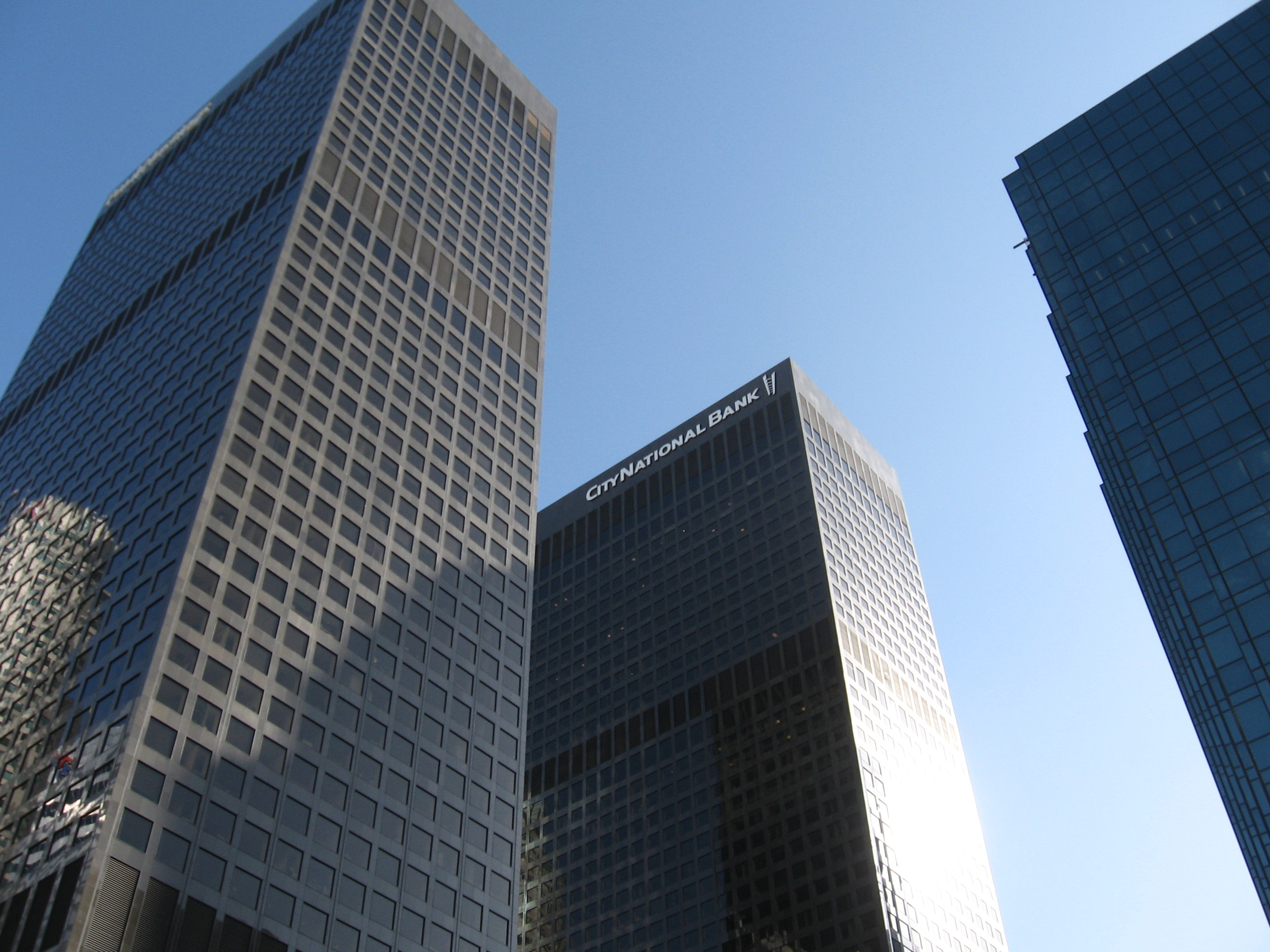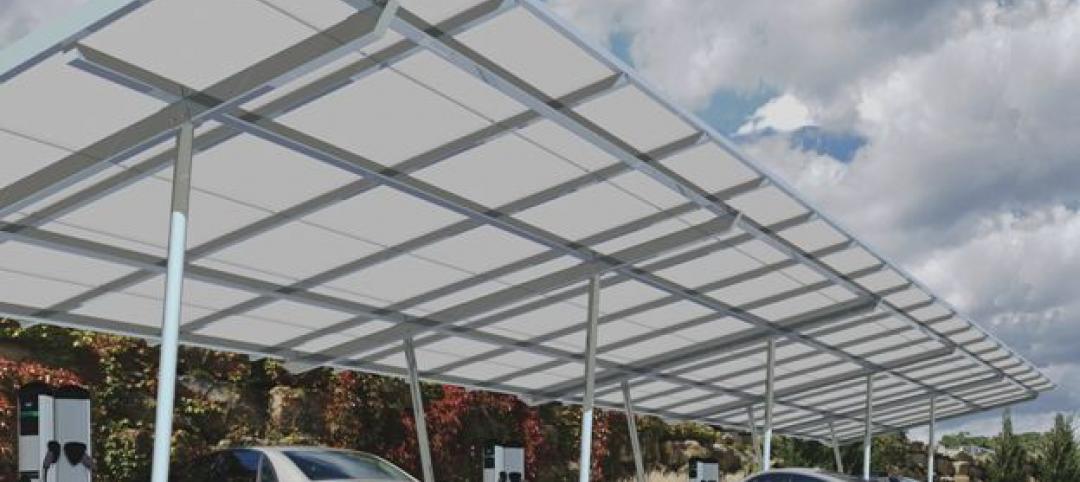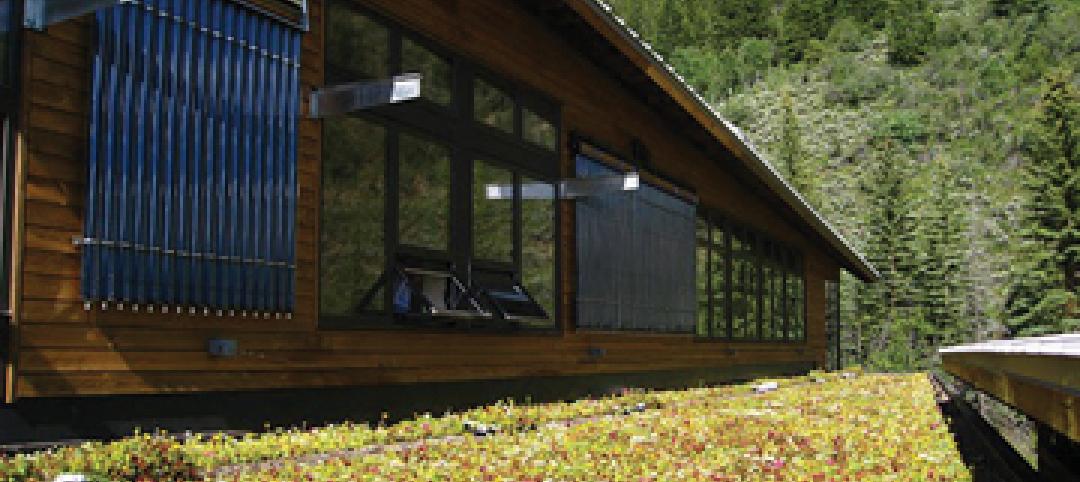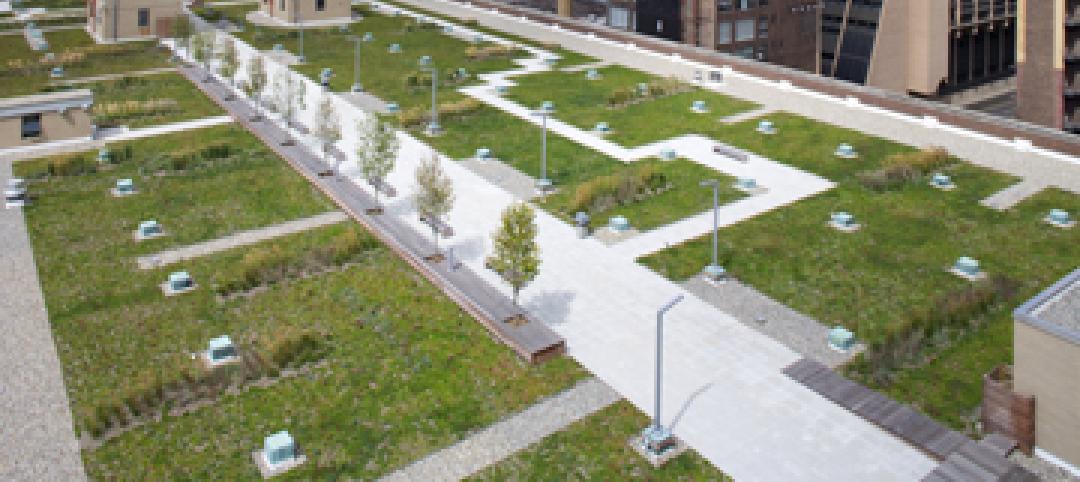Leading real estate companies are achieving incrementally significant reductions in their properties’ energy and water consumption and greenhouse gas emissions, according to the latest Greenprint Performance Report, released by the Urban Land Institute’s Greenprint Center For Building Performance.
This is the sixth annual report from the Greenprint Center, a worldwide alliance of real estate owners, investors, and strategic partners. Greenprint and its members are striving to reduce global greenhouse gas emissions by 50% by 2030. From 2009 through 2014, Greenprint’s membership grew by 140% to 36, and the properties being tracked increased by 768% to 5,224 buildings with 1.2 billion sf in 51 countries.
Over that five-year span, the energy consumption of members’ buildings fell by 11%, carbon emissions by 10.8%, the cost of energy by 4.5%, of electricity by 12.7%, and of water by 9%. Between 2013 and 2014 alone, members reported a 3.3% lowering in energy consumption to 11.8 billion kWh, a 2.7% reduction in greenhouse gas emissions to 4.3 million metric tons; a 2% decrease in electricity to 8.4 billion kWh; and a 1.9% reduction in water use to 54.5 million kiloliters (14.3 million gallons).
Greenprint notes that energy use and emissions reductions in the latest year tracked were equivalent to 277,856 barrels of oil not consumed, 25,153 cars taken off the road, 10,901 homes not consuming energy, 3,063,538 trees planted, or 58,211 metric tons of coal not burned.
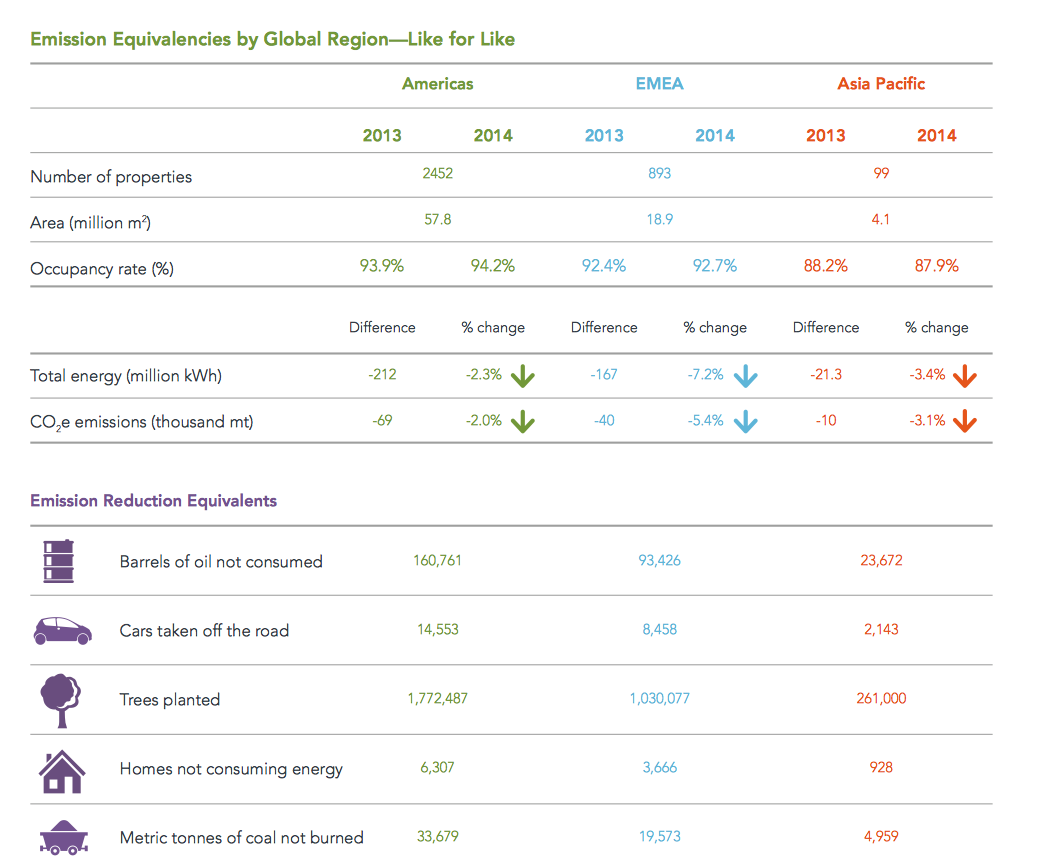
While these reductions are laudable, the report doesn’t sugarcoat the magnitude of the challenge lying ahead for a world—and by implication the real estate and AEC industries: Carbon dioxide in the air is at stratospheric levels globally. 2014 was the warmest year since temperatures were first measured in 1880.
As a result, “Sea level, as observed by satellites over the past 20-plus years, has risen by about 75 millimeters (2.95 inches), adversely affecting coastal cities, infrastructure, and the environment globally.”
The report notes, too, that more than half of the world’s population currently lives in urban areas, and that the built environmental produces up to 75% of greenhouse gas emissions in cities. And by 2025, over 1.8 billion people could be living in countries with “absolute water scarcity,” and two-thirds of the world’s population could be living under water-distressed conditions.
The report breaks down its members’ performance data geographically (The Americas, Europe/Middle East/Africa (EMEA), and Asia Pacific), and by industry sector: office (which accounted for 37% of total square footage tracked in 2013-2014), retail (14%), industrial (27%), multifamily (17%), and hotels (5%). The report includes performance data showing the extent that members’ buildings are lowering their waste and improving the biodiversity within their communities.
For each sector, the report offers prescriptive advice by way of case studies, some of which were effective without being all that expensive. The developer/builder AvalonBay replaced 3,575 toilets in 2,546 of its apartments in California, and saved 4.2 million gallons of water per year. In 2015, AvalonBay instituted a California water task force to bring water-efficient projects to scale and support residential engagement and education.

The Starwood W Retreat and Spa Maldives replaced its old air-conditioning system with efficient inverter-type AC units for staff accommodations and variable-refrigerant-flow units for guest villas and the spa. The resort installed heat-recovery fixtures that use generator waste heat to provide continuous hot water. It upgraded room lighting to LEDs and replaced 50 TVs with more efficient LED sets. It installed motion sensors to operate lights and exhaust fans. And it used power analyzer meters for each energy distribution area. Starwood’s total investment of $1,448,392 resulted in a 25% reduction in peak energy load, a 42% reduction in generator running hours (for the years 2011-2014), and $313,051 in diesel oil cost savings for the period 2013-2014.
Greenprint also singles out City National Plaza in Los Angeles, two 52-story office towers and one 40-story pavilion building. Its owner Commonwealth Partners took a holistic approach to upgrading the environmental performance of the property by making improvements to energy, water, indoor air quality and transportation. It now uses sustainable cleaning products for 98% of the building’s area. And it installed high performance filtration equipment and entry mats to mitigate environmental contaminants. The complex reduced its energy consumption by 38%, its water consumption by 40%, and is achieving annual savings of $4.3 million. The buildings’ proximity to mass transit allows an average of 600 passengers to be diverted to public transportation via natural gas fueled shuttles.
On the emissions front, the retrofit, by property manager Grosvenor, of an 811-sf multifamily building in London to Passivhaus EnerPhit standards—which included upgrading to more efficient ventilation, new triple-glazed mock sash windows, and improved insulation and airtightness—is expected to reduce tenants’ energy consumption by 80%, and to cut emissions by 840,000 kilograms—the equivalent of 1,900 barrels of oil not consumed—over the 60-year life of the property.
Bentall Kennedy, which manages two medical office buildings in San Antonio, consolidated quarterly HVAC maintenance under one vendor, retrofitted the building automation system with an interface that allowed better labeling and scheduling, and negotiated a new energy price contract. A $20,460 investment is projected to result in a 25% annual reduction in GHG emissions, and $558,384 in savings over 10 years.
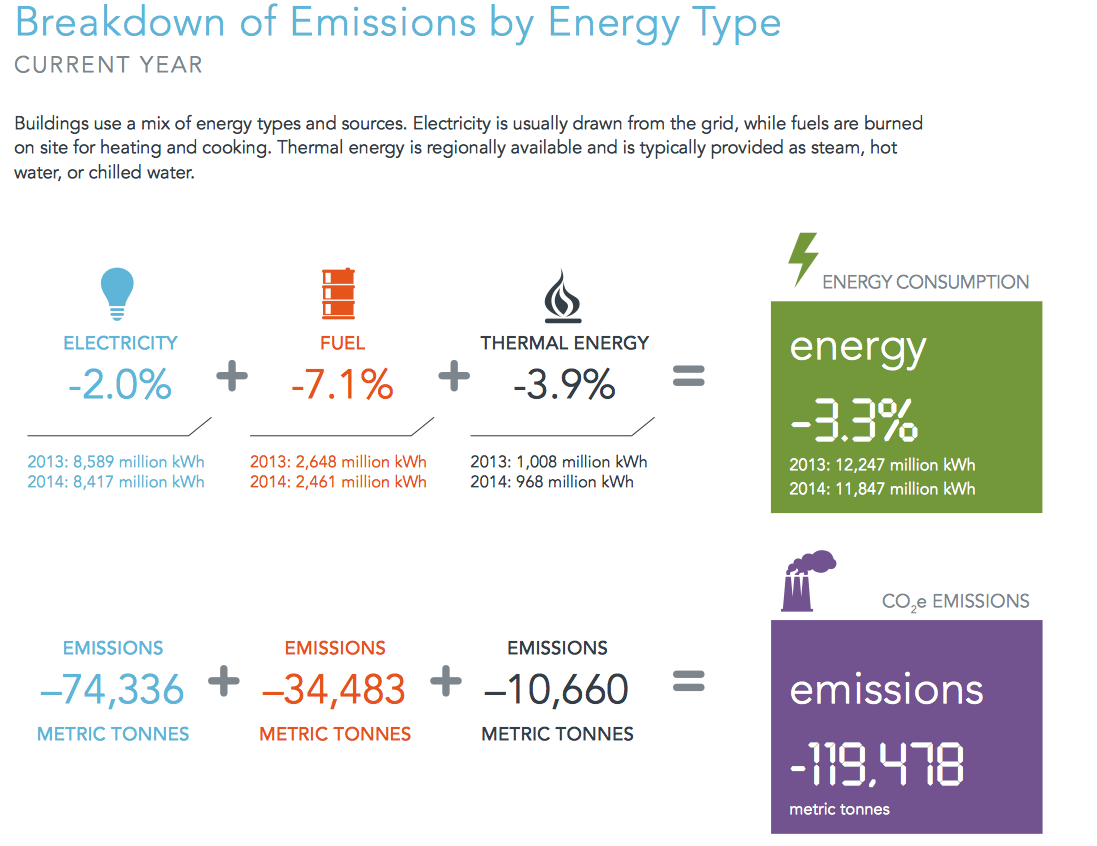

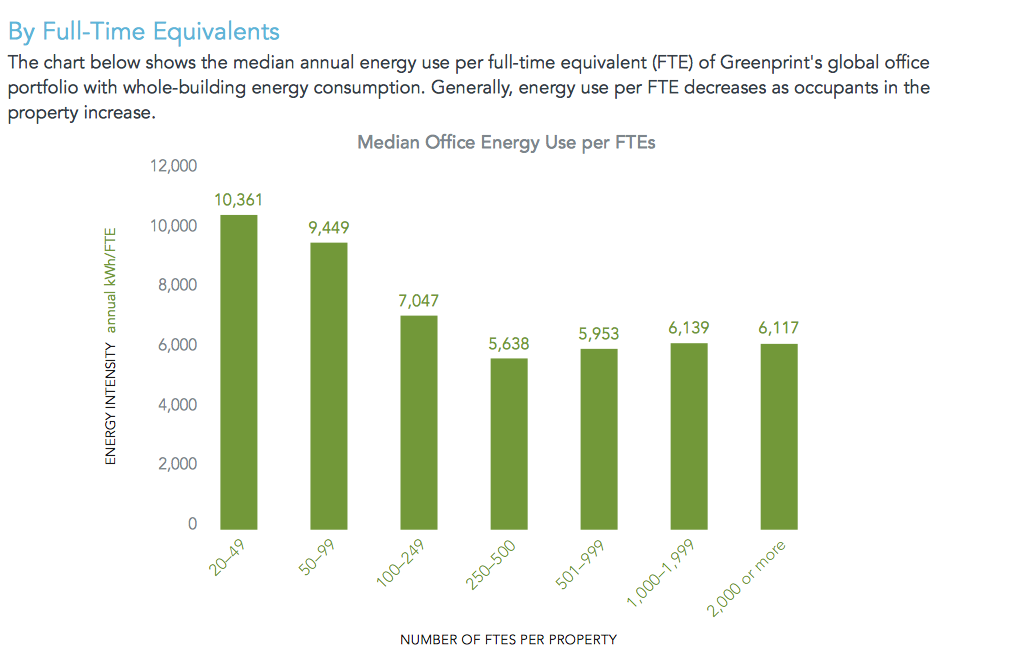
Related Stories
| Oct 5, 2011
GREENBUILD 2011: Solar PV canopy system expanded for architectural market
Turnkey systems create an aesthetic architectural power plant.
| Oct 5, 2011
GREENBUILD 2011: Brick offers growing options for sustainable building design
Brick exteriors, interiors and landscaping options can increase sustainability that also helps earn LEED certification.
| Oct 4, 2011
GREENBUILD 2011: Two new recycled glass products announced
The two collections offer both larger and smaller particulates.
| Oct 4, 2011
GREENBUILD 2011: Wall protection line now eligible to contribute to LEED Pilot Credit 43
The Cradle-to-Cradle Certified Wall Protection Line offers an additional option for customers to achieve LEED project certification.
| Sep 23, 2011
Okanagan College sets sights on Living Buildings Challenge
The Living Building Challenge requires projects to meet a stringent list of qualifications, including net-zero energy and water consumption, and address critical environmental, social and economic factors.
| Sep 19, 2011
Portland team hired as LEED and commissioning consultants for $5.5B downtown sustainable project in Qatar
The $5.5 billion sustainable downtown regeneration project underway by Msheireb Properties will transform a 76 acres site at the centre of Doha, Qatar’s capital city, recreating a way of living that is rooted in Qatari culture, attracting residents back to the city center and reversing the trend for decentralization.
| Sep 14, 2011
USGBC L.A. Chapter's Green Gala features Jason McLennan as keynote speaker
The Los Angeles Chapter of the nonprofit USGBC will launch its Sustainable Innovation Awards this year during the chapter's 7th Annual Green Gala on Thursday, November 3.
| Sep 12, 2011
PVs play new roles as a teaching tool
Solar installations are helping K-12 schools around the country save money and teach students the intricacies of renewable energy sources.
| Sep 12, 2011
Living Buildings: Are AEC Firms up to the Challenge?
Modular Architecture > You’ve done a LEED Gold or two, maybe even a LEED Platinum. But are you and your firm ready to take on the Living Building Challenge? Think twice before you say yes.
| Sep 12, 2011
Putting a stamp on USPS's first green roof
The Morgan Building roof totals 150,000-sf. In addition to a vegetated green roof, other roof areas were upgraded and included 55,000-sf of reflective concrete pavers and ballast, which were also placed over a Sarnafil waterproofing membrane, and 40,000-sf of EnergySmart Roof—a reflective, energy-efficient vinyl roofing system from Sika Sarnafil.


